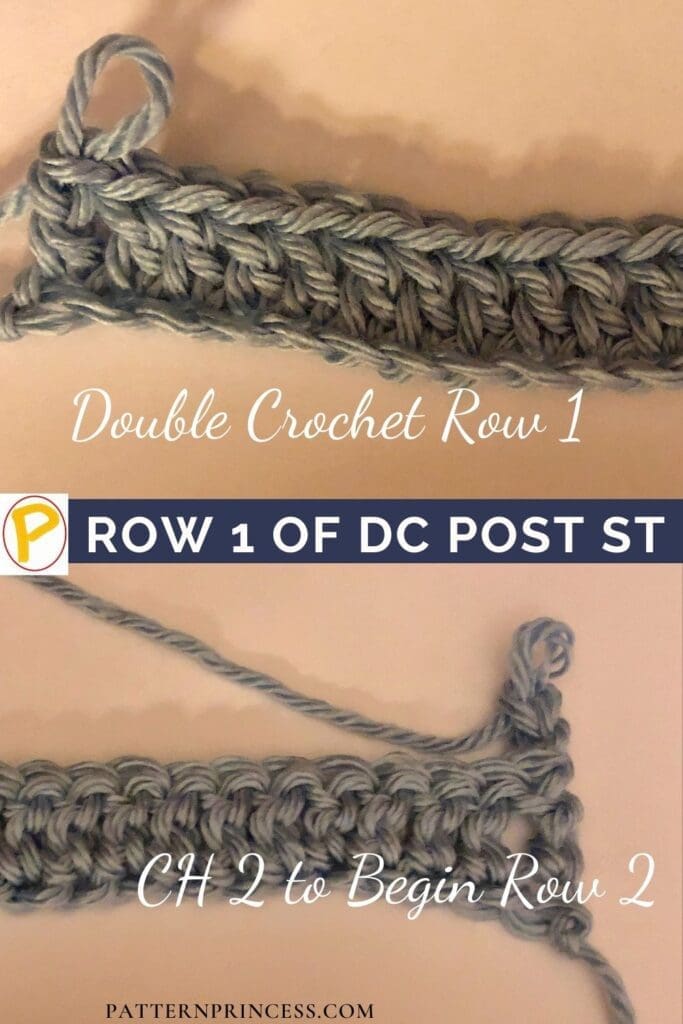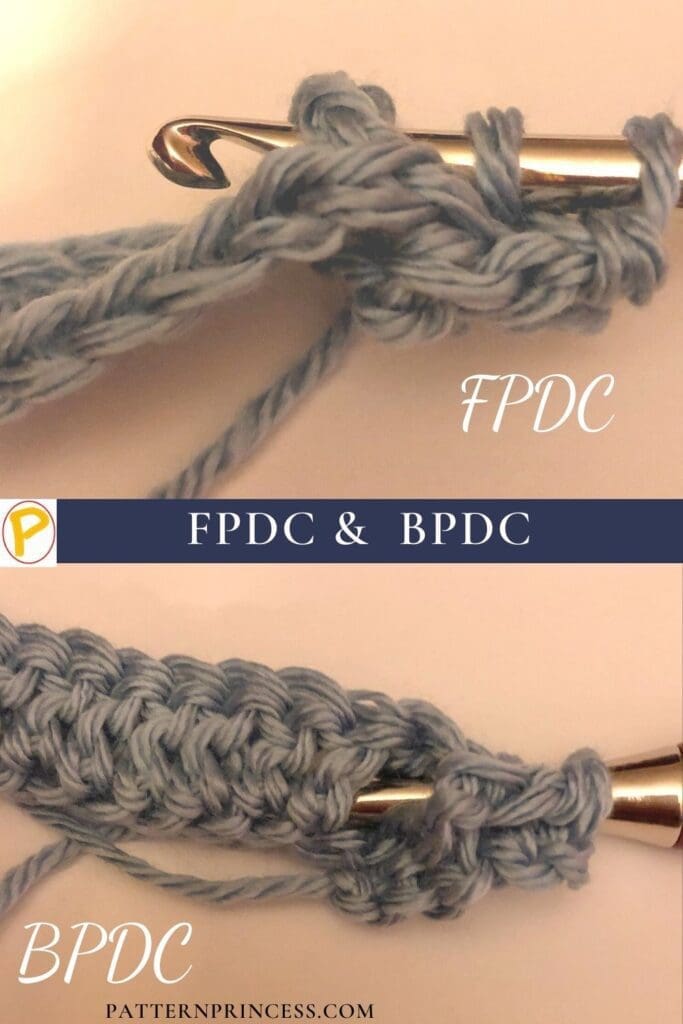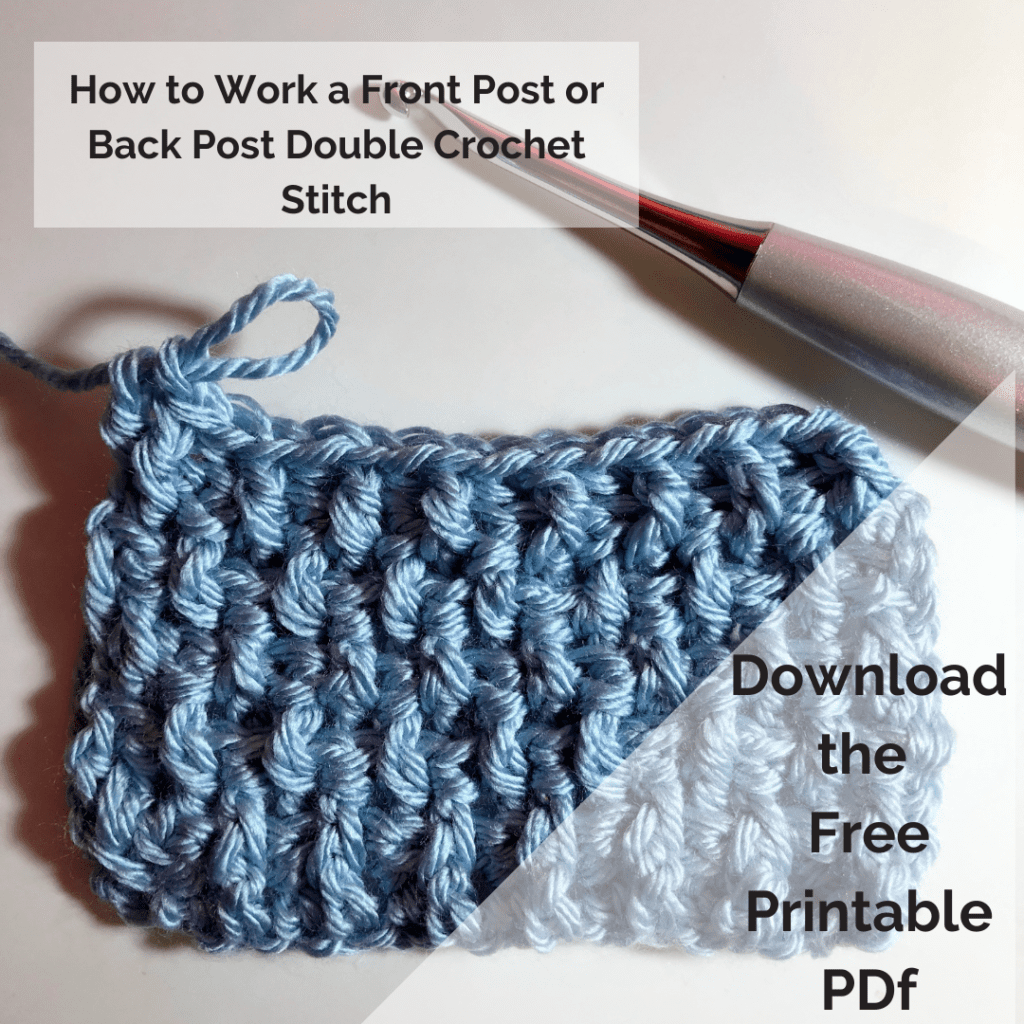Last updated on July 4th, 2024 at 11:41 pm
Learn how to work a front post or back post double crochet stitch. If you are new to crochet and wondering if you can master this stitch; if you can manage a regular double crochet, you can work these stitches too.
While the double crochet stitch is a very common and simple crochet stitch, working a front post stitch or back post stitch can add interest and texture to your work. In this tutorial, we’ll show you how to use basic crochet stitches like the double crochet working around a front post or back post stitch. You can add some pizzazz and texture to your projects.
Post contains affiliate links, and we earn commissions if you shop through the links on this page. For more information, please read the disclosure section under the About Us page.
What is Crocheting Around a Post?
If a pattern calls for you to work around the post of a stitch it means that you’re going to be working around the stitch itself sometimes referred to as the body of the stitch rather than the top of the stitch in the loops.
Post stitches can be worked using the double crochet, treble crochet, half double crochet, or single crochet stitch. Probably the most common post stitch used in patterns is the double crochet stitch.
Today though, we are going to show you how to work the front post or back post double crochet. Therefore, once you have mastered the double crochet stitch, you are ready for this tutorial.
The only difference is where you place your stitch. In this case, there are two options for placing your stitch: front post double crochet (FPDC) or back post double crochet (BPDC).
Crochet Pro Tip: Because a post stitch has shorter stitches than a normal stitch, you make the turning chain with one chain stitch less than the normal turning chain required for a double crochet; therefore, chain 2 at the end of a row.
Along with written instructions, there is a photo tutorial and a couple of Video Tutorials to help with this crochet stitch tutorial.
Back Post Double Crochet (BPDC)
The back post stitches appear to recede on the side of the crocheted fabric that is facing you.
- Yarn over, insert the hook from back to front between the posts of the first and second double crochet of the row below.
- Then insert the hook from the front to the back front between the posts of the second and third stitches. (The hook should now be positioned horizontally in front of the double crochet that you are working around).
- Yarn over, pull the yarn over the post of the stitch.
- There should now be 3 loops on the hook. Yarn over, pull the yarn through 2 loops on the hook.
- Last, yarn over again and pull through the last two loops on the hook.
HOW TO CROCHET THE BACK POST DOUBLE CROCHET video tutorial
Front Post Double Crochet (FPDC)
Front post stitches are raised crochet stitches on the surface of the fabric facing you.
When you work front post stitches, you will insert your hook from the front of your work to the back. Insert your hook the front to the back, so that the post you want to crochet around is in front of your hook.
- Yarn over, insert the hook from front to back between the posts of the first and second double crochet of the row below.
- Then insert the hook from the back to the front between the posts of the second and third stitches. (The hook should now be positioned horizontally in back of the post that you are working around).
- Yarn over, pull the yarn around the post of the stitch. There should now be 3 loops on the hook.
- Yarn over, pull the yarn through 2 loops on the hook.
- Lastly, yarn over again and pull through the last two loops on the hook.
HOW TO CROCHET THE FRONT POST DOUBLE CROCHET video tutorial
Crocheting the Front Post and Back Post Double Crochet
This is a method of altering between the front post double crochet and back post double crochet. Use this for creating instant texture. I love it for borders on blankets. However, it is very nice for a hat brim or even the entire crochet project. Check out the individual stitch directions above both written and video. The video link below shows how to complete this stitch pattern.
FRONT POST AND BACK POST DOUBLE CROCHET video tutorial
Where to Use the Post Stitch?
Post stitches can be used to create interesting textures and decorative touches in your crochet projects.
Create different effects by changing where you place your post stitches. If you alter the post stitches from the previous row every other one, you will end up with a lovely, ribbed look. This is lovely for ribbing on blanket borders.
However, crochet hats have gorgeous texture using this stitch pattern. Or just use this for hat brims for a little bit more strength and style.
Alter the number of front post and back post double crochet stitches used for creating more of a checkerboard or squared look.
Crochet cables, the basket weave stitch, waffle stitch, or even the crocodile stitch rely on the use of post stitches.
Once you start using this easy stitch, there are just so many options. I hope you give this fun stitch a try on your next crochet project.
Here are a few free crochet patterns using this stitch.
Try these basic stitches with various yarn weight to create a lovely crochet fabric.
Soft and Sweet Textured Velvet Crochet Blanket. This pattern uses the stitches throughout the blanket.
Textured Ombre Crochet Blanket. Just part of the pattern uses this stitch to create texture on specific rows.
Alternate the stitches to create a ribbed border in these blanket patterns.
Crochet Textured Baby Blanket in Pastel
Ocean Paradise Crochet Throw Blanket
Explore other crochet tutorials.
Other free crochet patterns you may enjoy.
Sign up for the newsletter and get access to this Printable PDF and others on our Free Patterns PDF Page.
You can find Victoria crocheting, quilting, and creating recipes. She has cooked in restaurants for over 20 years, including many larger parties. She learned to crochet when she was just 11 years old and has been crocheting ever since; over 50 years now. Over 40 years ago, she loved her first class in sewing and continues to hone her skills in quilting. Many have enjoyed the handmade gifts over the years. In her professional career, she has worked in management in a wide variety of businesses including higher education as a dean of a division. All the while attending college part-time to achieve her doctorate in higher education with an emphasis in e-learning.







